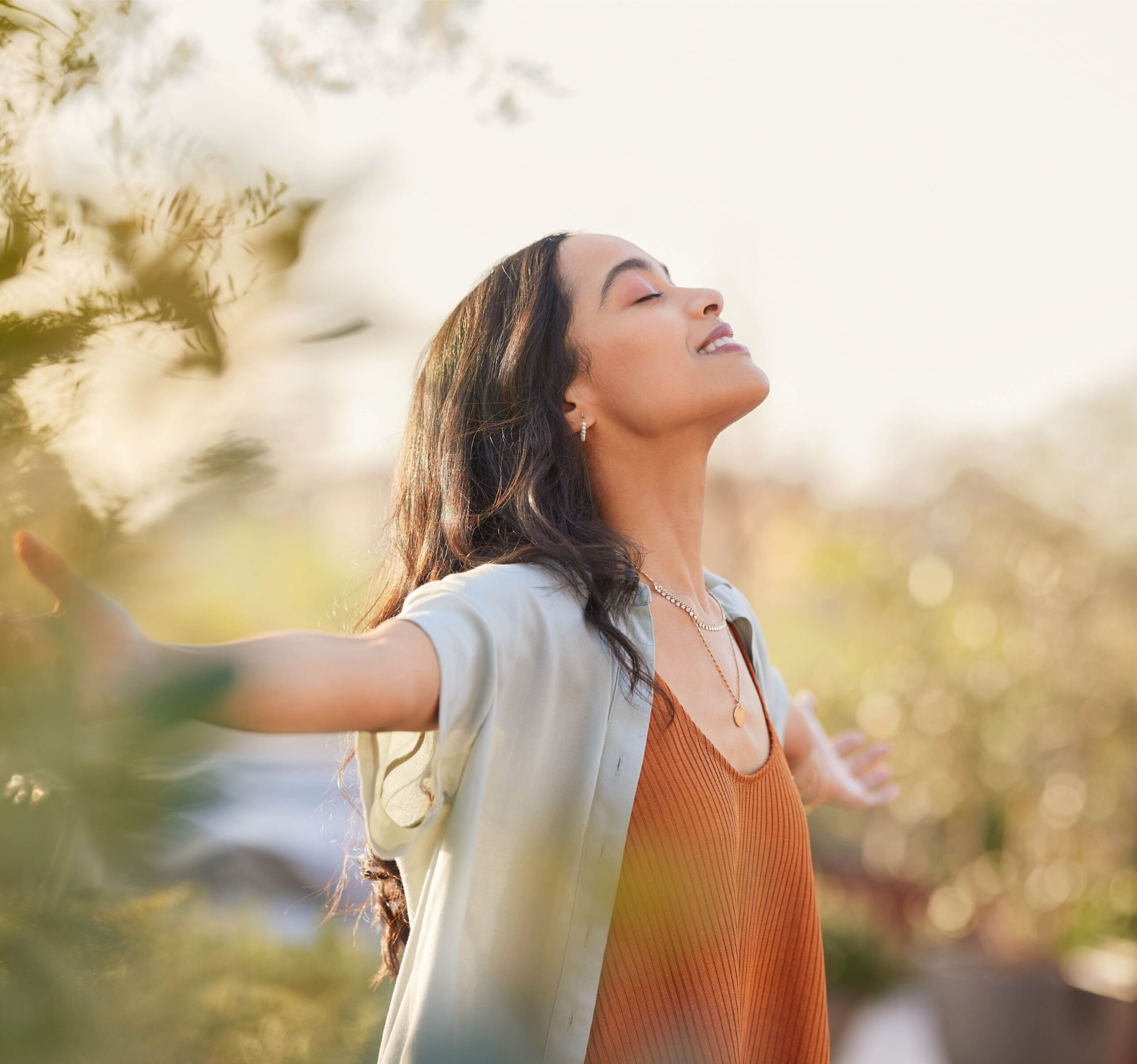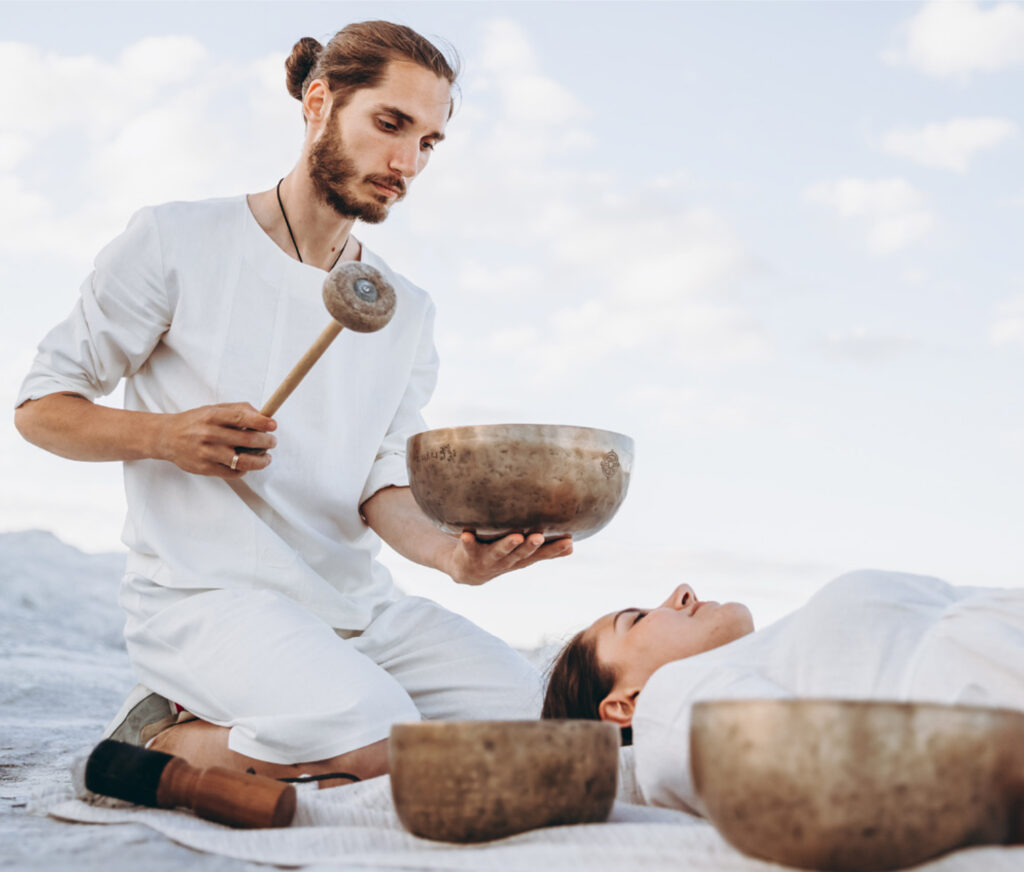Thanks to science and fads, health and wellness topics are always evolving. Here’s a roundup of some of the trends that might help you be your best self in 2024.

Chrono-nutrition
The weight-loss diet business is all about what and how much we eat. But chrono-nutrition is an emerging field of science focused on when we eat, particularly to be in sync with our body’s 24-hour circadian clock. Our digestive system is linked to our circadian rhythms of waking and sleeping. What time of the day we eat has a great impact on how well we function throughout the day and sleep at night. Eating out of step with our 24-hour body clock can lead to cravings, fatigue, poor mood, lack of focus and metabolic disorders.
 Here are a few basics of chrono-nutrition that the science says will align you with your circadian clock and lead to improved overall health:
Here are a few basics of chrono-nutrition that the science says will align you with your circadian clock and lead to improved overall health:
- Eat most of your calories in the morning or at least by 3pm. Your last meal of the day should be your smallest.
- Avoid eating in the late evening, particularly around and after 9pm, when melatonin, the sleep hormone, release begins. Digestion interferes with melatonin release and leads to poor sleep, fat storage and impaired glucose regulation.
- Our bodies like consistency, so eat regular meals around the same time daily to keep your 24-hour clock humming.
Sound bath
 A sound bath is described as a full-body meditative experience where you are bathed in sound waves while lying down, typically on a yoga mat. The sound waves can include those created by singing bowls, chimes, tuning forks, rattles, percussion and even chanting. The sessions can last from 15 to 60 minutes, with the goal being deep relaxation. Stand-alone sound bath businesses are popping up across the country, but sound bathing is usually offered at yoga and meditation studios.
A sound bath is described as a full-body meditative experience where you are bathed in sound waves while lying down, typically on a yoga mat. The sound waves can include those created by singing bowls, chimes, tuning forks, rattles, percussion and even chanting. The sessions can last from 15 to 60 minutes, with the goal being deep relaxation. Stand-alone sound bath businesses are popping up across the country, but sound bathing is usually offered at yoga and meditation studios.
A 2020 study of 105 participants who took part in a 40-minute sound bath reported reductions in negative moods with an increase in positive moods. There was also a decrease in heart rate in those who allowed themselves to be monitored.
Outdoor exercise and your brain
 While any and all exercise is good for the body and mind, outdoor exercise may have the edge when it comes to cognitive function. Researchers with the Canada-based University of Victoria and York University recently published a paper titled, Exercising is good for the brain but exercising outside is potentially better.
While any and all exercise is good for the body and mind, outdoor exercise may have the edge when it comes to cognitive function. Researchers with the Canada-based University of Victoria and York University recently published a paper titled, Exercising is good for the brain but exercising outside is potentially better.
Using advanced electroencephalography (EEG), the researchers assessed the cognitive function of 30 participants in their early 20s after 15-minute indoor or outdoor walks. After the latter, cognitive performance and brain EEG signatures associated with working memory were more enhanced compared to the indoor walks. The researchers concluded that the environment in which we are active plays a substantial role regarding increasing cognitive function.
The takeaway? Exercise outdoors as much as possible and you’ll not only be physically more fit, you may also get smarter.
Multi sensory saunas
Regular sauna session benefits include relaxed muscles, improved blood flow and skin health. A recent study published in the Complementary Therapy in Medicine journal found that a 25-minute sauna session had similar cardiovascular benefits as exercising on a stationary bike for the same amount of time.

Now comes the multi-sensory Aufguss sauna experience. Originating in Germany, an Aufguss sauna involves an Aufgussmeister who pours essential oil-infused water onto a sauna’s hot stones. Then the Aufgussmeister uses rhythmical towel movements to circulate the essential-oils fragrant air. This combines the traditional sauna use with aromatherapy to engage multiple senses, leading to a deeper state of relaxation and overall well-being.
Mindfulness
Considered a form of meditation, mindfulness is paying attention to the present moment without judgment. Mindfulness can take place during a meditation session or as a stand-alone practice at any time.
 Based in Buddhist and Hindu teachings, mindfulness is derived from the concept of sati, which encompasses attention and awareness. Jon Kabat-Zinn, who studied mindfulness extensively under several Buddhist teachers, is credited with the emergence of mindfulness in Western culture. As a professor at the University of Massachusetts medical school in the late 1970s, Kabat-Zinn established the Mindfulness-Based Stress Reduction (MBSR) program to treat chronic pain. The MBSR program helped people pay attention to their chronic pain with awareness rather than trying to avoid it, which only caused more distress.
Based in Buddhist and Hindu teachings, mindfulness is derived from the concept of sati, which encompasses attention and awareness. Jon Kabat-Zinn, who studied mindfulness extensively under several Buddhist teachers, is credited with the emergence of mindfulness in Western culture. As a professor at the University of Massachusetts medical school in the late 1970s, Kabat-Zinn established the Mindfulness-Based Stress Reduction (MBSR) program to treat chronic pain. The MBSR program helped people pay attention to their chronic pain with awareness rather than trying to avoid it, which only caused more distress.
Thanks to Kabat-Zinn’s success with the MBSR program, mindfulness has become a mainstream therapeutic technique. This includes Mindfulness-Based Cognitive Therapy, Commitment Therapy and Dialectical Behavior Therapy.
A mindfulness session can simply begin by sitting down and taking deep breaths, preferably inhaling through your nose, holding for a count of five, then exhaling through your nose for a count of five. Repeat and focus on each breath, as well as the scents and sounds around you. Shift your attention to your thoughts, observing each without self-criticism and judgment. Sit with those thoughts and just be in the present moment until you feel a sense of calm. During your day for a mini-mindfulness refresher, take a moment to just be present where you are.
Forest bathing
No, this is not about taking a bath in the forest. Shinrin-yoku, which in Japanese means forest-bathing, is about immersing yourself in the woods and reaping the benefits of being out in nature.
 In a study that was published in the Environmental Health and Preventive Medicine Journal, researchers conducted field experiments in 24 Japanese forests. Half of the study participants walked in urban areas and half walked in the forest. On the next day, participants switched where they walked. The results showed that walking in the forest lowered pulse rate, blood pressure and cortisol much more significantly than walking in the urban area.
In a study that was published in the Environmental Health and Preventive Medicine Journal, researchers conducted field experiments in 24 Japanese forests. Half of the study participants walked in urban areas and half walked in the forest. On the next day, participants switched where they walked. The results showed that walking in the forest lowered pulse rate, blood pressure and cortisol much more significantly than walking in the urban area.
Besides the calming green space of the forest, trees and plants release phytoncides, which are essential oils that protect from parasites and germs. When we breathe in these natural antimicrobials, our bodies also get a protective boost. Phytoncides promote a strong immune system, as well as acting as anti-inflammatories that reduce oxidative stress, reduce cortisol and blood glucose.
So, take a walk in the woods, pause to take a deep breath and then let nature do its magic.
Digital detoxing
Yes, everyone knows they spend way too much time on their digital devices, particularly our cellphones. Here are some signs that you likely need a digital detox:
- You check your phone every few minutes and you have trouble concentrating without having to check your phone.
- You feel stressed or anxious if you misplace your phone.
- You often stay up late or get up early to use your phone.
- Social media makes you feel depressed, anxious or angry.
- You fear you’ll miss something if you don’t check your phone.
 If you nodded to most of these signs of digital dependence, then it’s time for some digital detoxing and here are a few tips: Set up time blocks during the day when you turn off your phone; declutter your phone and delete apps you never use; don’t use your phone first thing in the morning or at night in bed or while watching television; take up a new hobby and keep your phone off while you are engaged in it; take a regular walk without your phone or at least turn it off until after the walk.
If you nodded to most of these signs of digital dependence, then it’s time for some digital detoxing and here are a few tips: Set up time blocks during the day when you turn off your phone; declutter your phone and delete apps you never use; don’t use your phone first thing in the morning or at night in bed or while watching television; take up a new hobby and keep your phone off while you are engaged in it; take a regular walk without your phone or at least turn it off until after the walk.
AI in health care
 Artificial intelligence (AI) is making many inroads into health care. For instance, virtual assistants and chatbots could provide advice on treatments, diagnoses and medications to clinicians. They could also be of service to patients by connecting them with information to make better health care choices. It is likely that virtual assistants and chatbots soon will interface with electronic health record systems, booking and scheduling appointments.
Artificial intelligence (AI) is making many inroads into health care. For instance, virtual assistants and chatbots could provide advice on treatments, diagnoses and medications to clinicians. They could also be of service to patients by connecting them with information to make better health care choices. It is likely that virtual assistants and chatbots soon will interface with electronic health record systems, booking and scheduling appointments.
Through AI, digital twins of a human body have been developed and are being used to make diagnoses and treat patients. AI is used in 3D printing to create medical devices, surgical instruments and prosthetics. Research is ongoing on using a patient’s biological tissue to create 3D organs for transplants.
In genomics, the study of all of a person’s genes, AI is being utilized to analyze an individual’s DNA to diagnose and create personalized medications.
Editor’s note: The information in this article is not intended to diagnose, treat, cure or prevent any disease. Always discuss any concerns with your health care provider. OS
Sources: healthline.com, medicalnewstoday.com, psychologytoday.com, verywellmind.com, forbes.com and prevention.com






